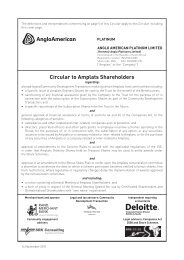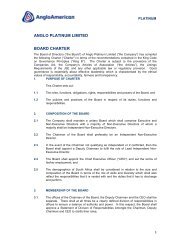Download PDF - Anglo American Platinum
Download PDF - Anglo American Platinum
Download PDF - Anglo American Platinum
You also want an ePaper? Increase the reach of your titles
YUMPU automatically turns print PDFs into web optimized ePapers that Google loves.
There were also several other villages that have been impacted, notthrough relocation, but rather through impacts associated with theexpansion to the Mine. Leroleng, Skimming and Ga Molekane haveall reportedly experienced negative impacts in this regard. The scopeof this report will focus neither on those villages solely experiencingeconomic displacement nor on those villages experiencing negativeimpacts associated with the Mine. Instead, it focuses exclusively onthe villages which experienced physical displacement.1.3.2 ResearchThe primary approach to collecting data for the review was throughconducting interviews with a wide range of stakeholders associatedwith the relocation process. This was supplemented by a desktopstudy of primary and secondary data made available by AP, as wellas data included in other external commentaries reviews such as theAction Aid and South African Human Rights Commission reports.The Study TeamA large team was involved in conducting the research. This teamincluded both consultants from ERM and external consultants whoprovided facilitation and interpretation services, and advice on ruraland traditional protocol. This support came from Ben Moshwana(Phambili Skills Network) and Jimmy Mnisi (Di-idea Communication).Since the team was often divided into small groups whenconducting interviews, it was important to ensure consistency. Thiswas done through the issuing of a set of broad questions to guideinterviews, based on the core IFC requirements and how communitymembers and other stakeholders may have experienced them.These questions (Annex 1A) were developed to serve as a looseguide for the interviews. It was, however, felt to be important thatan open-ended approach be adopted to these interviews in orderto ensure that the issues raised were those considered importantby interviewees and discussion was not limited solely to the IFCframework.Designing the ProcessPrior to designing the research process, ERM interviewed a set ofexternal stakeholders and opinion formers who were not directlyinvolved with the relocation processes, but were able to give a ‘bird’seye view’ of these processes. Such engagements were undertakenboth to scope the set of key issues of relevance for the review andto identify which stakeholders were important to include in theengagement process. These included: Action Aid; The South African Human Rights Commission (SAHRC); Dr Ramphela Mamphele; David Langa (son of Kgoshigadi Langa); and Richard Spoor (attorney acting on behalf of the resistantcommunities).Engaging StakeholdersThe core set of stakeholders interviewed for the review were thosethat had been directly involved in the resettlement, includingrepresentatives of the following: AP’s Project’s Team, and associated consultants andcontractors implementing the relocation; The communities who were subject to the relocation (aswell as those who resisted physical relocation and remainin the old settlements); and Government role-players who were directly associated withthe relocation.A three-tiered approach was adopted to engaging communitystakeholders. For each of the identified factions or sub-groups, thestudy team engaged at the following levels: Community leaders, including traditional and electedleaders; Community gatherings; and A sample of individual households.A list of all those interviewed is included in Annexure C.Selecting Stakeholders to EngageERM followed the advice of AP Corporate Affairs with respectto which Mine-related stakeholders to engage. These includedmembers of the teams responsible for the relocation as well as keyconsultants who supported this team through the process.When selecting who to engage for the community perspectiveon relocation, ERM was guided by the community. The study teamwent on an initial, introductory visit to the respective Headmen(Indunas) to introduce the study and seek advice on how bestto proceed with engaging the community through this review.Based on the outcomes of this visit, ERM designed an engagementplan which recognised and respected the numerous factions thathad developed in each of the communities. Meetings with thecommunity were convened with each of the factions that presentedthemselves. This amounted to three separate groups at Ga Pila, andfour at Motlhotlo. These were:Ga Pila A faction of the community at Sterkwater, the site ofthe relocated village, who are aligned with the IndunaReconciliation Committee;4


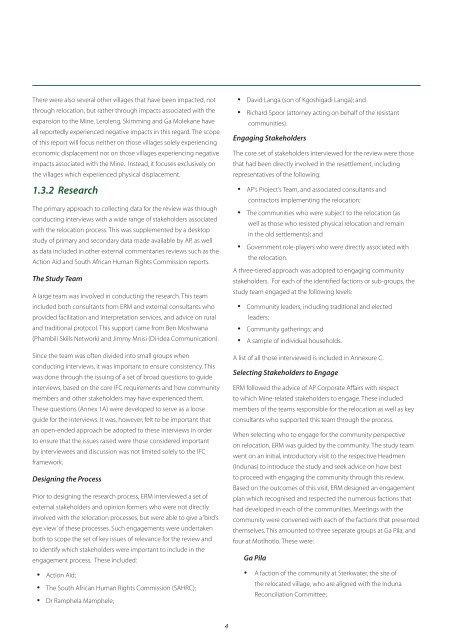
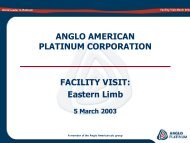
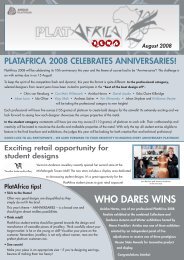
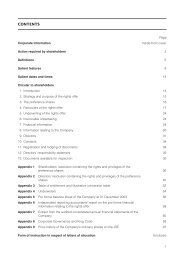

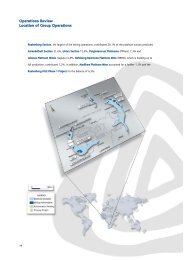


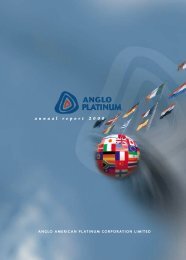
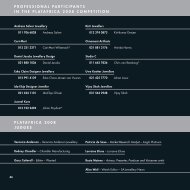
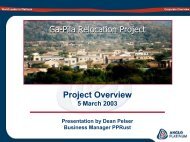
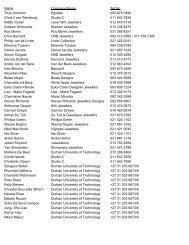
![[PDF] Mogalakwena Mine - Anglo Platinum](https://img.yumpu.com/43065142/1/184x260/pdf-mogalakwena-mine-anglo-platinum.jpg?quality=85)
